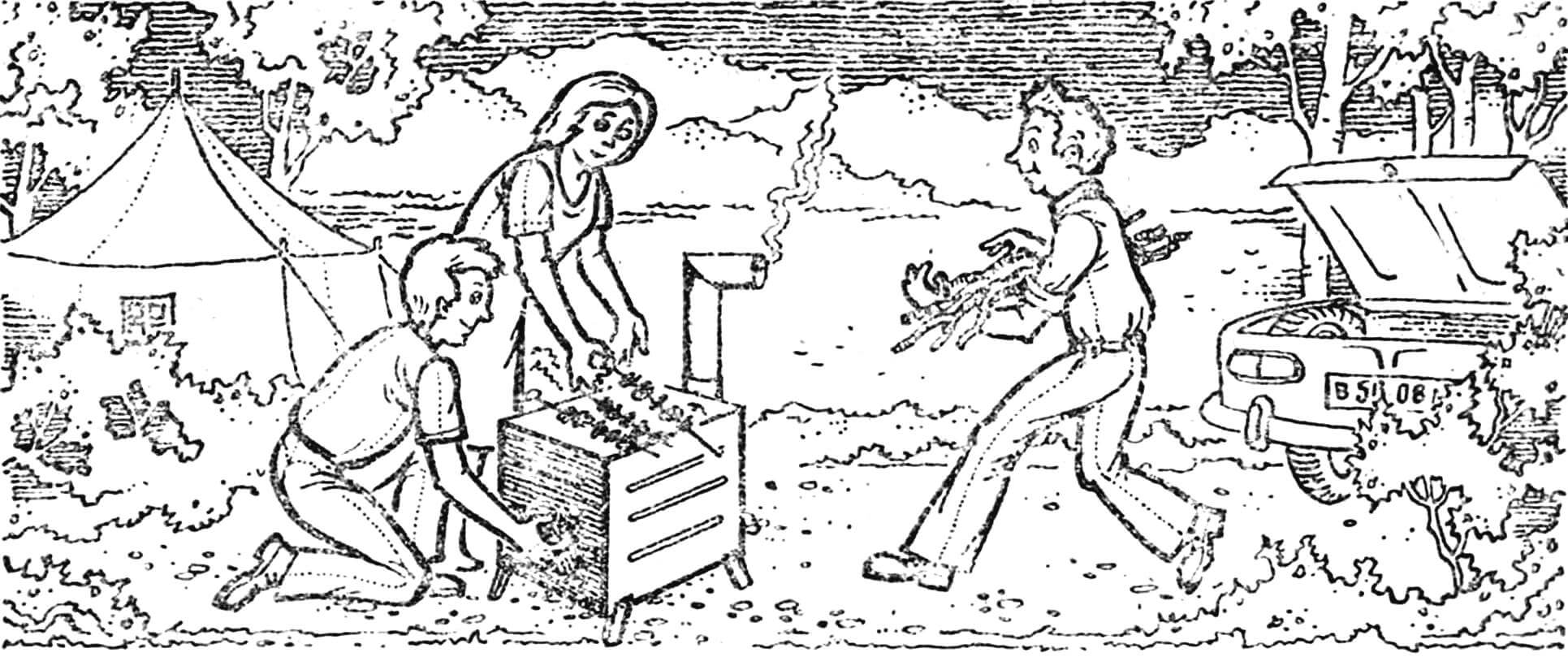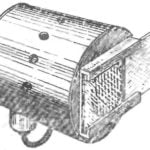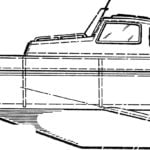In one of the spring programs of the Central Television, “You Can Do It,” enthusiasts of technical creativity got acquainted with a universal camp stove, or rather, an entire kitchen, which was designed and manufactured by an avid and experienced tourist I. Maslov. The advantages of the development he demonstrated are compactness, ease of transportation, simplicity, safety and cost-effectiveness. Many people would like to have such a stove – we are publishing its design.
On a camping trip, just like at home, you want to eat delicious food. Tourists, when preparing to travel, take with them all kinds of pots, frying pans, barbecues, smoking boxes, etc. Even with its compact size, this kitchen utensil takes up a lot of space. In addition, cooking in the same pot requires lighting an open fire. In the forest, this sometimes leads to unjustified cutting of bushes and trees, and in some cases to forest fires. This is why the making of fires is now almost universally prohibited. Especially in areas of mass recreation for workers.
The above reasons prompted the idea to develop a universal device with which you can prepare almost any dish without harming the environment. This device was manufactured in 1975. Eight years of operation have shown that the stove fully satisfies the most demanding needs.

1 – small pot, 2 – lid-frying pan, 3, 4 – scoops, 5 – skewer (6 pcs), 6 – removable lid, 7 – grate, 8 – tray, 9 – large pot, 10 – chimney, 11 – box, 12 – grate.
Its structure is simple: its rectangular box is bent from 0.8 mm thick stainless steel sheet with rifts extruded to increase the rigidity of the walls. The butt weld runs in the middle of the rear wall, and the chimney pipe is welded into it. The front wall is equipped with a firebox door with a latch. On the side walls: at the top there are cap locks for the lid, at the bottom there are folding legs.
Steel corners with flanging are attached to the upper edge of the box by spot welding: they increase the rigidity of the structure and simultaneously serve as supports for the frying pan and pots. The corners are connected to each other by overlays.
The lower edge of the box is also reinforced with corners and gussets welded by spot welding. They serve as a support for a grate grid made of heat-resistant steel sheets 1 mm thick.
The box has a removable lid, equipped with a folding handle for carrying, a gas outlet with a flap and hooks for cap locks. The lid, cut from a 0.8 mm thick stainless steel sheet and assembled using rivets and spot welding, fits tightly onto the flange of the upper edge of the box.
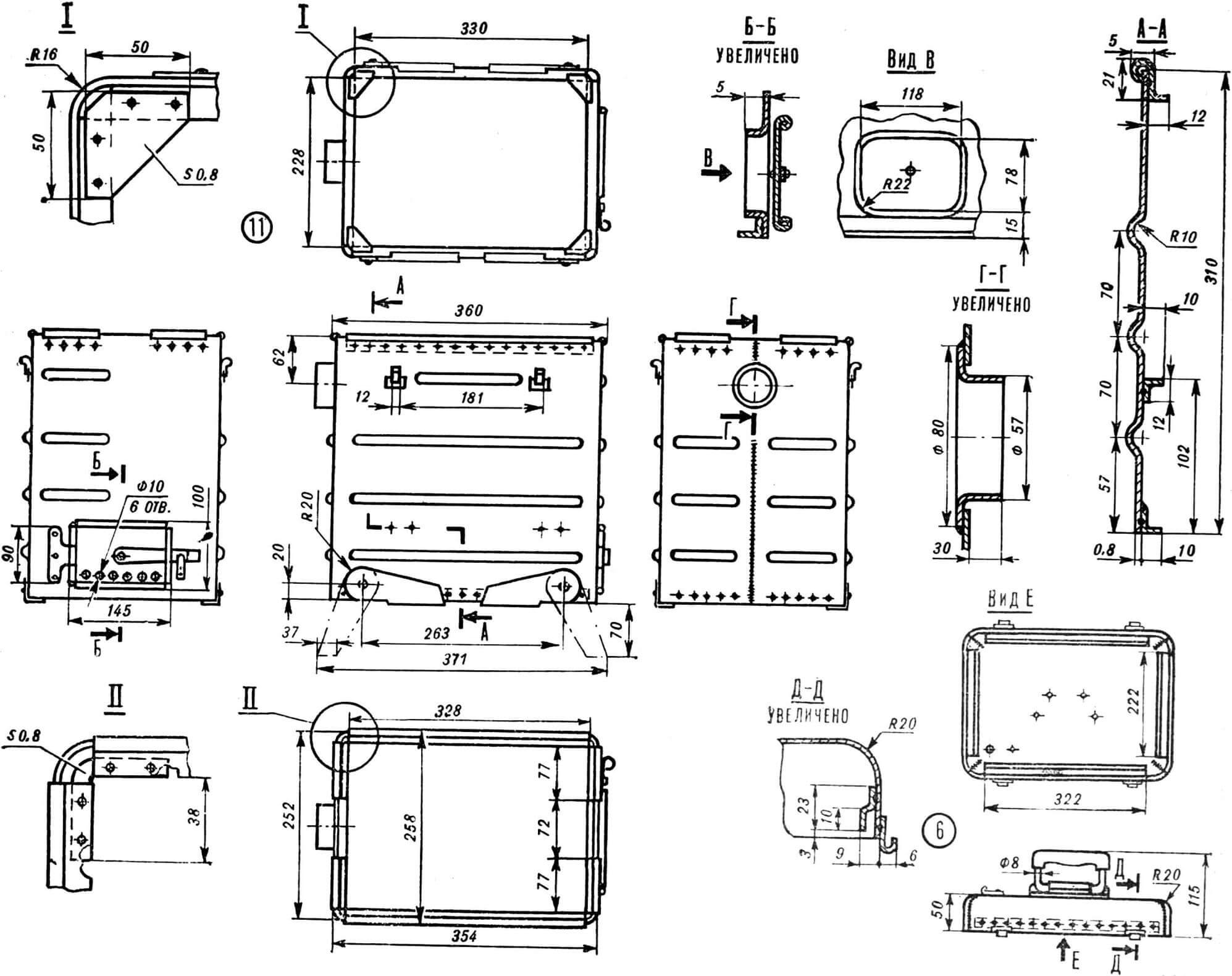
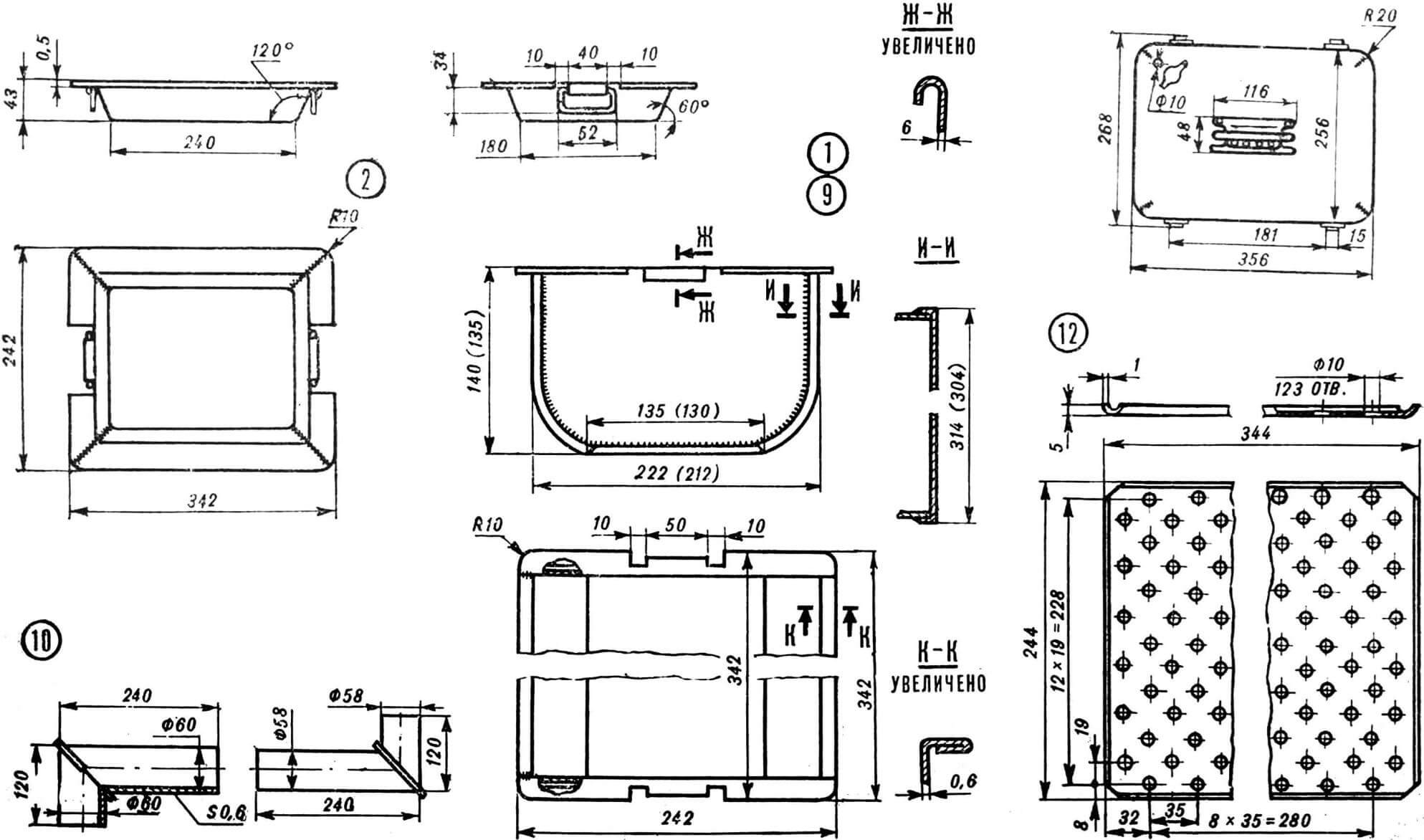
The kit also includes: a removable composite chimney, large and small pots, a lid-frying pan, grips for them, a tray and a grid on legs, skewers. In the transport position, all this is folded into a box, covered with a lid, and the stove with folded legs is put away in a case or backpack. Its total weight is 5.3 kg.
The chimney is available in two versions: from a bent steel pipe or from roofing iron.
The cauldrons are identical in design and differ only in size – the smaller one is inserted into the larger one. They are made of stainless steel 0.6 mm thick using welding or stamping. The frying pan lid and tray are made similarly. The grid is welded from steel wire Ø 4 mm.
What can you cook with a camp stove? Yes, the same as at home: fish soup, soup, borscht, pilaf, roast meat and fish, mushroom, flour dishes, shish kebab, smoked meats, compote, tea… With no less success, the stove is also used for drying mushrooms.
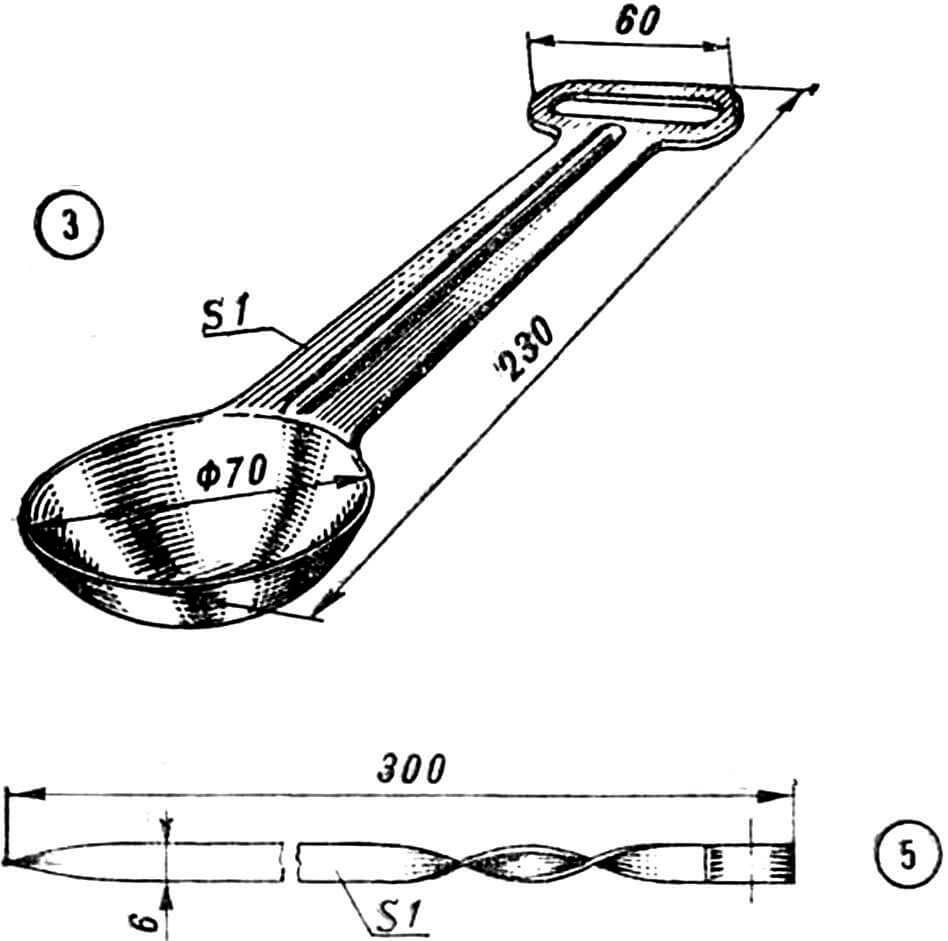
They drown it with wood waste and dry wood. Without exaggeration, we can say that in terms of fuel consumption it is almost a hundred times more economical than a fire!
In a large pot you can quickly prepare first and second courses, boil eggs and potatoes. In a small way – boil tea, cook compote. The lid of the pots is also a frying pan; meat, fish, vegetable, mushroom dishes, cheesecakes, scrambled eggs, and the like are cooked on it.
Bread. On a hike you cannot protect it from becoming stale. But it doesn’t matter: if you put a tray with a quarter glass of water in one of the pots, and a wire rack with a stale loaf of bread on it, then in five to seven minutes, under the influence of heat and water vapor, both the freshness and taste of the bread will be restored.
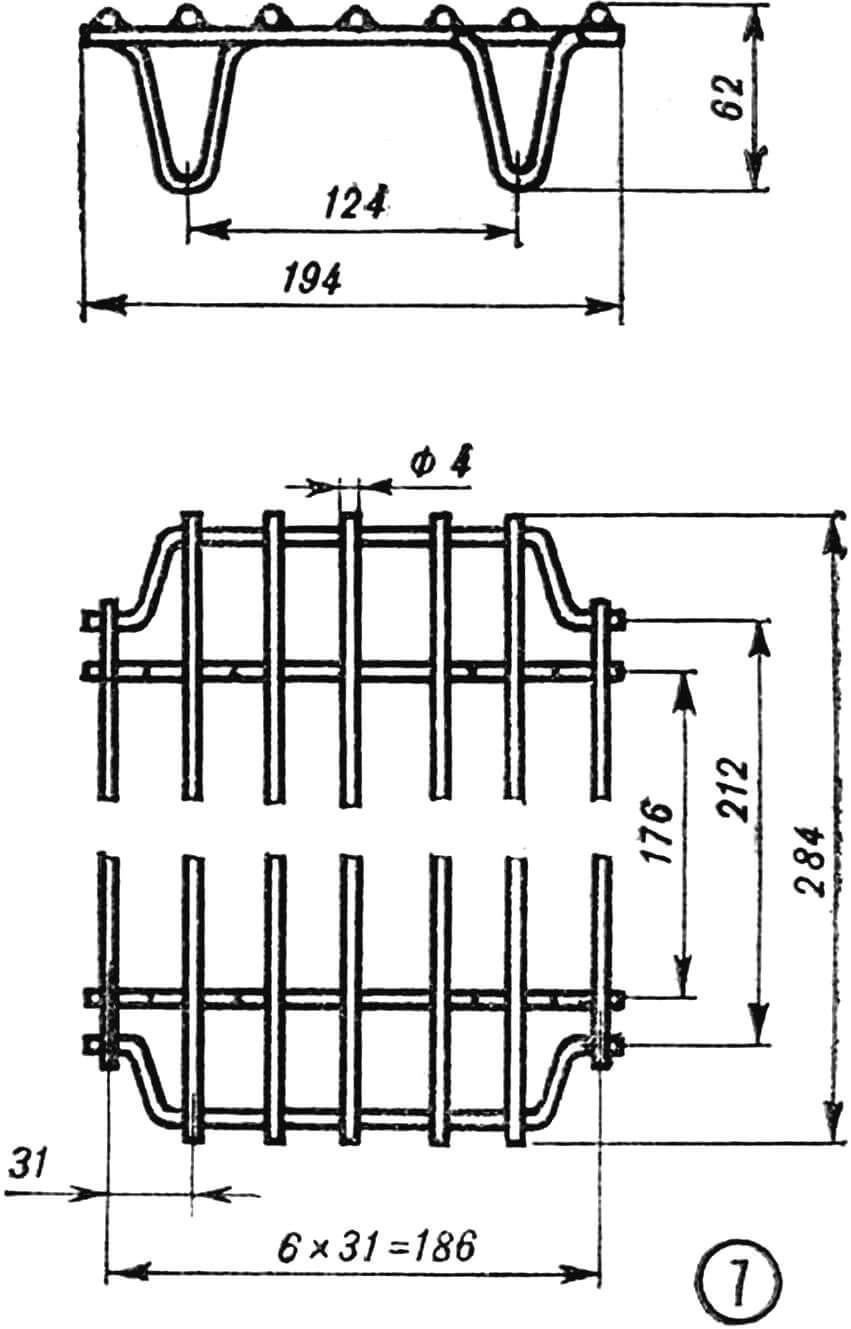
Now about how game and fish are smoked and flour products are baked. A small pot is placed in the box, at the bottom of which there is sawdust, preferably alder. Above them is a tray with lattice and game. The pan prevents the combustion of fat and juice released from the game during smoking on the smoking sawdust.
To obtain a pleasant golden color of smoked products, as well as to eliminate the bitter aftertaste, it is necessary to slightly open the gas outlet hole in the lid, regulating the flow of smoke with a damper.
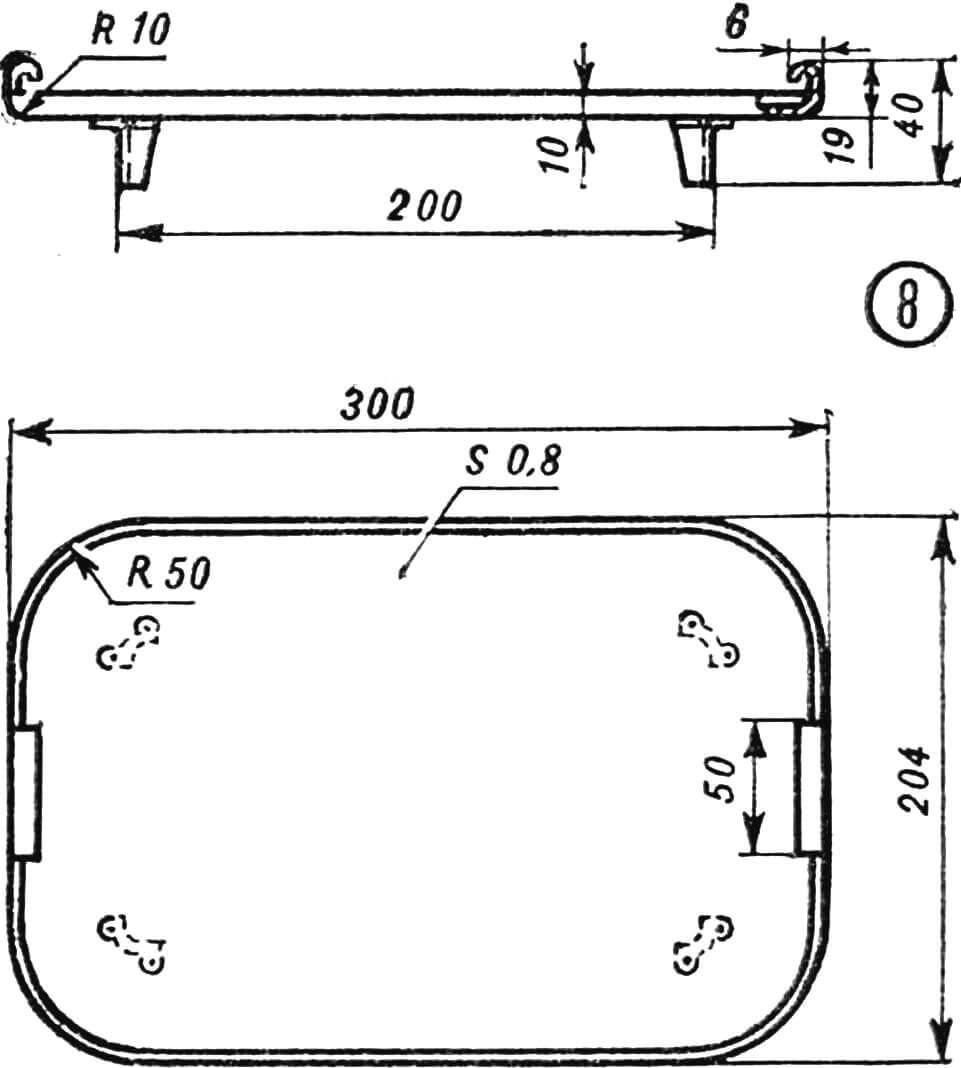
When drying mushrooms, sawdust is not poured and a tray is not installed – just a lattice. In this case, the gas outlet must be completely open. Towards the end of drying, the box lid is opened slightly or removed completely. You can dry mushrooms even easier – on skewers.
They also cook shish kebab. To do this, everything is removed from the box, the grate is raised onto additional supports, the position of which is determined experimentally; coals are poured onto it and skewers with meat are placed on the upper cut of the box.
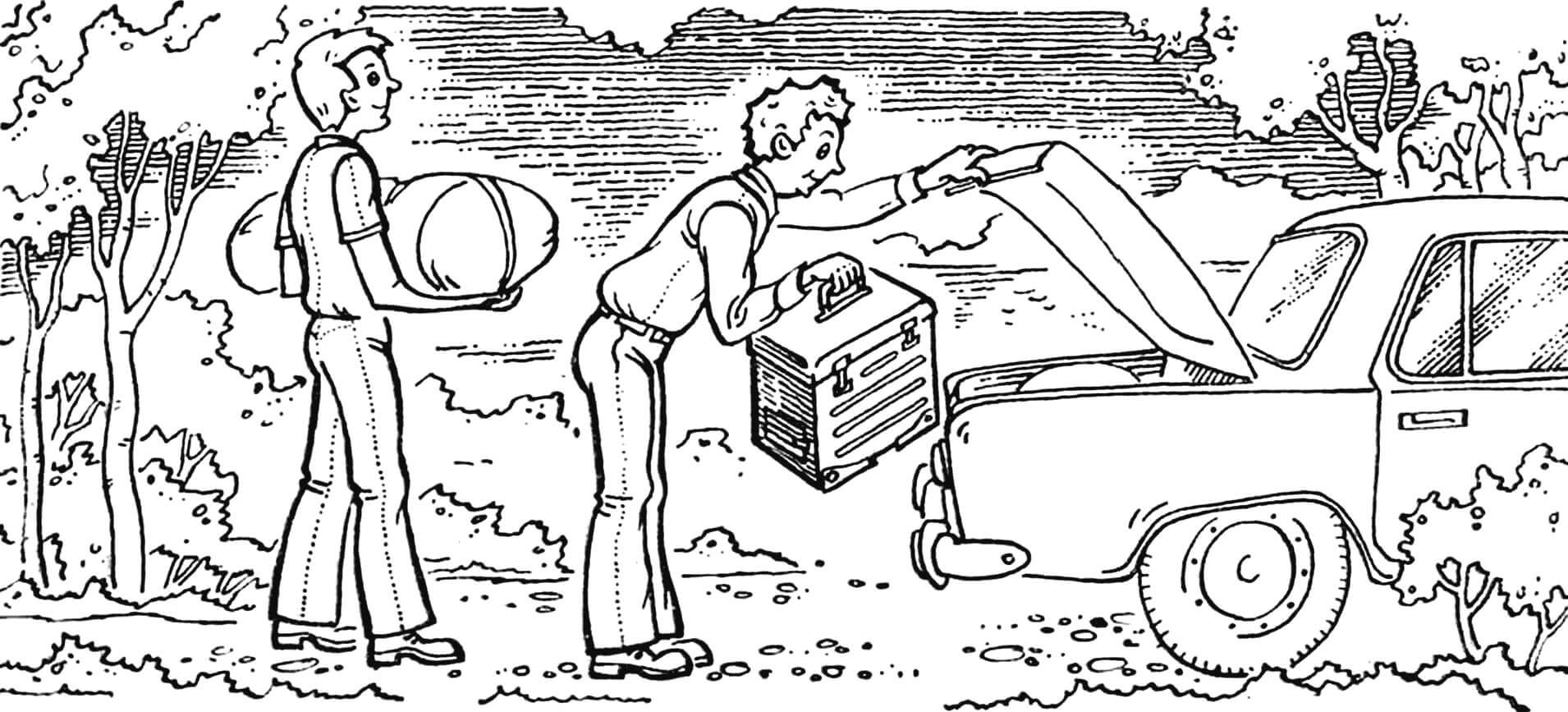
After cooking, all waste – potato peelings, bones, fish scales, etc. – should be burned in the furnace firebox, the ash, as an excellent fertilizer, should be scattered under the trees so that no garbage remains at the site.
I. MASLOV
